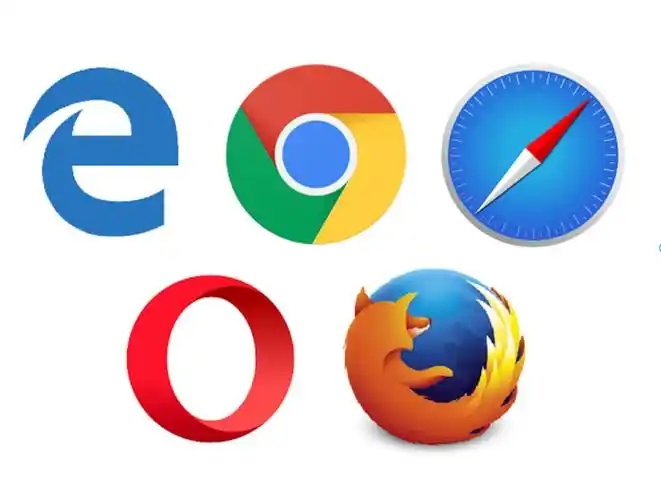
提示:判断用户设备(如手机、平板、电脑、操作系统、浏览器等)可以通过多种技术手段实现,主要包括以下几种方法:
文章目录
1. 使用 navigator.userAgent(用户代理字符串)
浏览器会在 HTTP 请求头中发送 User-Agent,JavaScript 可以通过 navigator.userAgent 获取该信息,并解析设备类型。
示例代码
const userAgent = navigator.userAgent.toLowerCase();
// 判断设备类型
const isMobile = /mobile|android|iphone|ipod|ipad|windows phone/i.test(userAgent);
const isTablet = /ipad|android|tablet|kindle|silk/i.test(userAgent);
const isDesktop = !isMobile && !isTablet;
// 判断操作系统
const isWindows = /windows|win32|win64/i.test(userAgent);
const isMac = /macintosh|mac os x/i.test(userAgent);
const isLinux = /linux/i.test(userAgent);
const isIOS = /iphone|ipad|ipod/i.test(userAgent);
const isAndroid = /android/i.test(userAgent);
// 判断浏览器
const isChrome = /chrome|crios/i.test(userAgent);
const isFirefox = /firefox|fxios/i.test(userAgent);
const isSafari = /safari/i.test(userAgent) && !isChrome;
const isEdge = /edg|edge/i.test(userAgent);
const isIE = /msie|trident/i.test(userAgent);
console.log({
isMobile,
isTablet,
isDesktop,
isWindows,
isMac,
isLinux,
isIOS,
isAndroid,
isChrome,
isFirefox,
isSafari,
isEdge,
isIE,
});
- 优缺点
✅ 简单易用,适用于大多数场景。
❌ 可能被篡改(某些浏览器允许修改 User-Agent)。
❌ 未来可能失效(Chrome 计划逐步淘汰 User-Agent,改用 Client Hints)。
2. 使用 window.screen 检测屏幕尺寸
可以根据屏幕分辨率、像素密度等判断设备类型。
示例代码
const screenWidth = window.screen.width;
const screenHeight = window.screen.height;
const pixelRatio = window.devicePixelRatio || 1;
// 常见设备分辨率参考
const isMobile = screenWidth < 768;
const isTablet = screenWidth >= 768 && screenWidth < 1024;
const isDesktop = screenWidth >= 1024;
console.log({
screenWidth,
screenHeight,
pixelRatio,
isMobile,
isTablet,
isDesktop,
});
- 优缺点
✅ 难以伪造(screen.width 比 User-Agent 更可靠)。
❌ 不能区分操作系统或浏览器。
❌ 某些设备(如折叠屏)可能影响判断。
3. 使用 navigator.platform 检测操作系统
返回用户的操作系统平台(如 Win32、MacIntel、Linux x86_64)。
示例代码
const platform = navigator.platform.toLowerCase();
const isWindows = platform.includes("win");
const isMac = platform.includes("mac");
const isLinux = platform.includes("linux");
const isIOS = /iphone|ipad|ipod/i.test(navigator.userAgent);
console.log({
platform,
isWindows,
isMac,
isLinux,
isIOS,
});
- 优缺点
✅ 比 User-Agent 更精准(仅返回操作系统)。
❌ 无法区分具体设备(如 iPad vs Mac)。
4. 使用媒体查询(CSS + JS)
可以通过 CSS @media 或 JS window.matchMedia() 判断设备类型。
示例代码
const isMobile = window.matchMedia("(max-width: 767px)").matches;
const isTablet = window.matchMedia("(min-width: 768px) and (max-width: 1023px)").matches;
const isDesktop = window.matchMedia("(min-width: 1024px)").matches;
console.log({
isMobile,
isTablet,
isDesktop,
});
- 优缺点
✅ 响应式设计友好,适合自适应布局。
❌ 不能检测具体设备或浏览器。
5. 使用现代 API(如 navigator.userAgentData)
Chrome 等浏览器正在推广 User-Agent Client Hints,提供更结构化的设备信息。
示例代码
if (navigator.userAgentData) {
const { mobile, platform, brands } = navigator.userAgentData;
console.log({
isMobile: mobile,
platform, // "Windows", "macOS", "Android", etc.
brands, // 浏览器品牌(如 Chrome, Edge)
});
} else {
console.log("Client Hints not supported, fallback to User-Agent");
}
优缺点
✅ 更精准、结构化(取代 User-Agent)。
❌ 兼容性较差(仅 Chrome 89+ 支持)。
6. 使用第三方库(推荐)
如果不想手动解析,可以使用现成的库:
-
UAParser.js(解析 User-Agent)
-
react-device-detect(React 专用)
-
platform.js(轻量级设备检测)
-
示例(UAParser.js)
import UAParser from "ua-parser-js";
const parser = new UAParser();
const result = parser.getResult();
console.log(result);
// 输出示例:
// {
// browser: { name: "Chrome", version: "120.0.0.0" },
// os: { name: "Windows", version: "10" },
// device: { model: "iPhone", type: "mobile", vendor: "Apple" }
// }
总结
| 方法 | 适用场景 | 优点 | 缺点 |
|---|---|---|---|
| navigator.userAgent | 通用设备检测 | 简单、广泛支持 | 可能被篡改 |
| window.screen | 判断屏幕尺寸 | 难以伪造 | 不能区分 OS/浏览器 |
| navigator.platform | 检测操作系统 | 比 User-Agent 更精准 | 不能区分设备 |
| CSS/JS 媒体查询 | 响应式布局 | 适合自适应设计 | 不能检测具体设备 |
| navigator.userAgentData | 现代浏览器 | 结构化数据 | 兼容性差 |
| 第三方库(如 UAParser.js) | 生产环境推荐 | 精准、易用 | 需额外依赖 |
推荐方案
- 简单检测 → navigator.userAgent + window.screen
- 生产环境 → UAParser.js
- 未来趋势 → User-Agent Client Hints(Chrome 推荐)
这样可以兼顾兼容性和准确性。






















 8万+
8万+

 被折叠的 条评论
为什么被折叠?
被折叠的 条评论
为什么被折叠?








